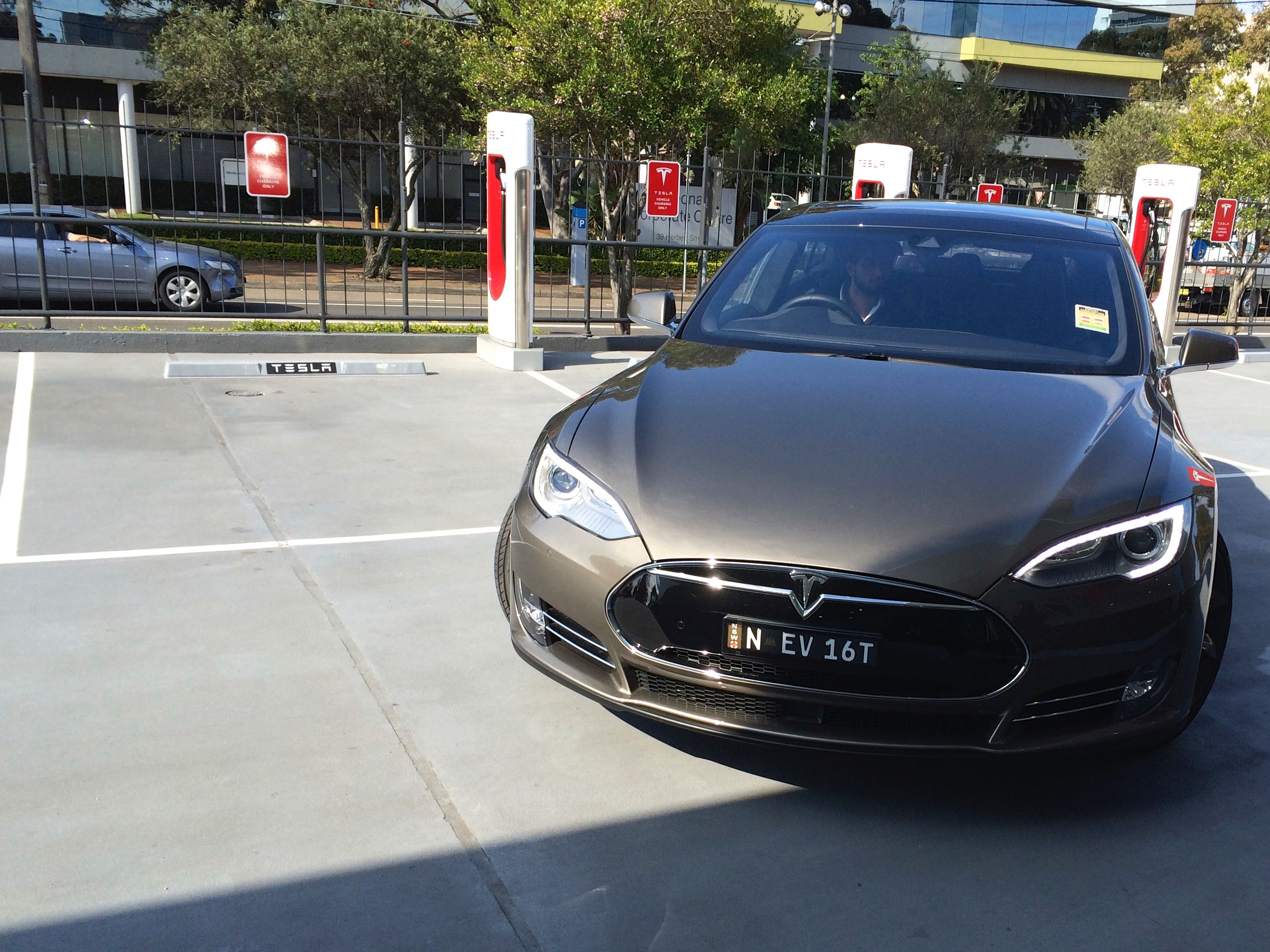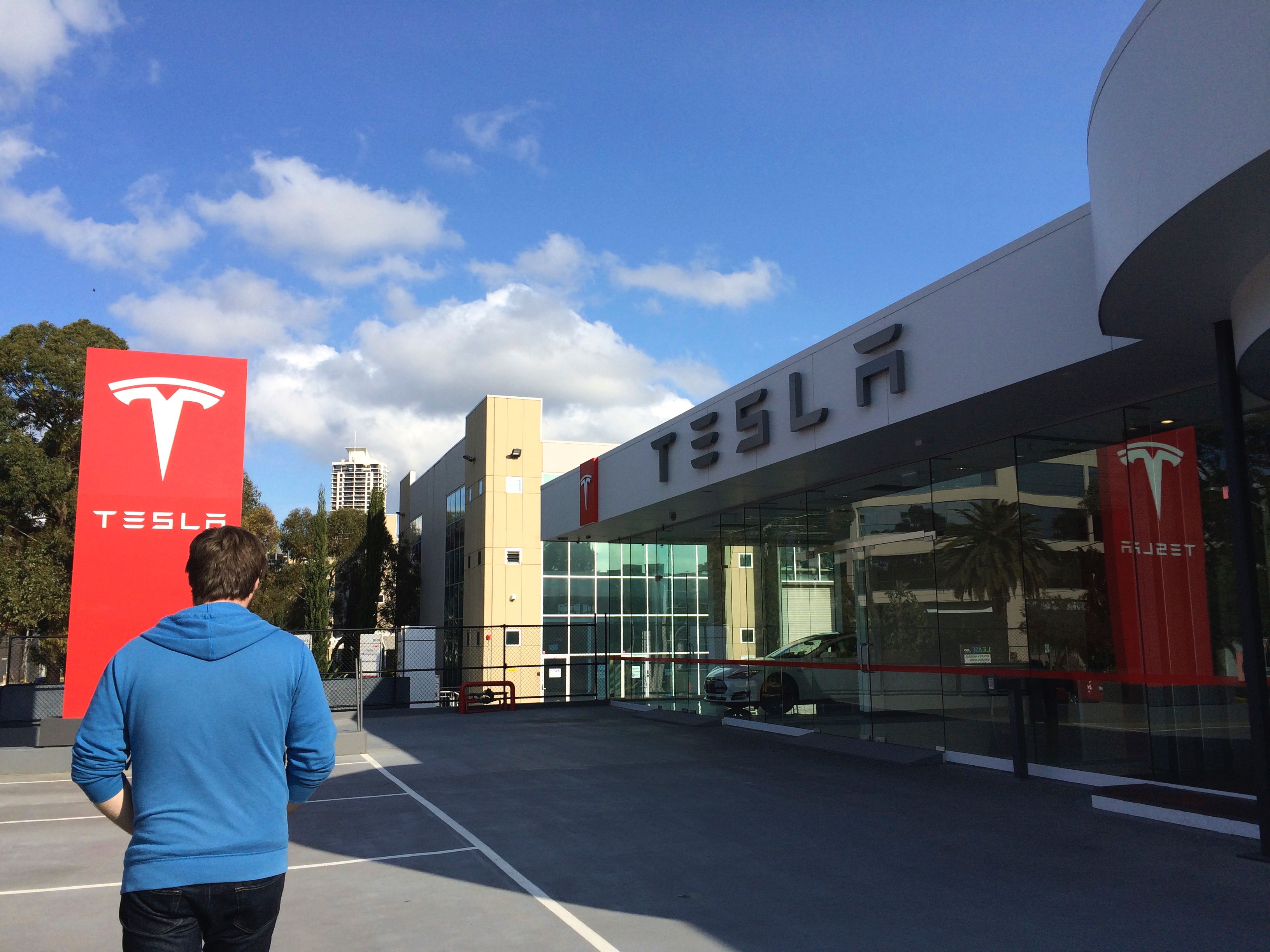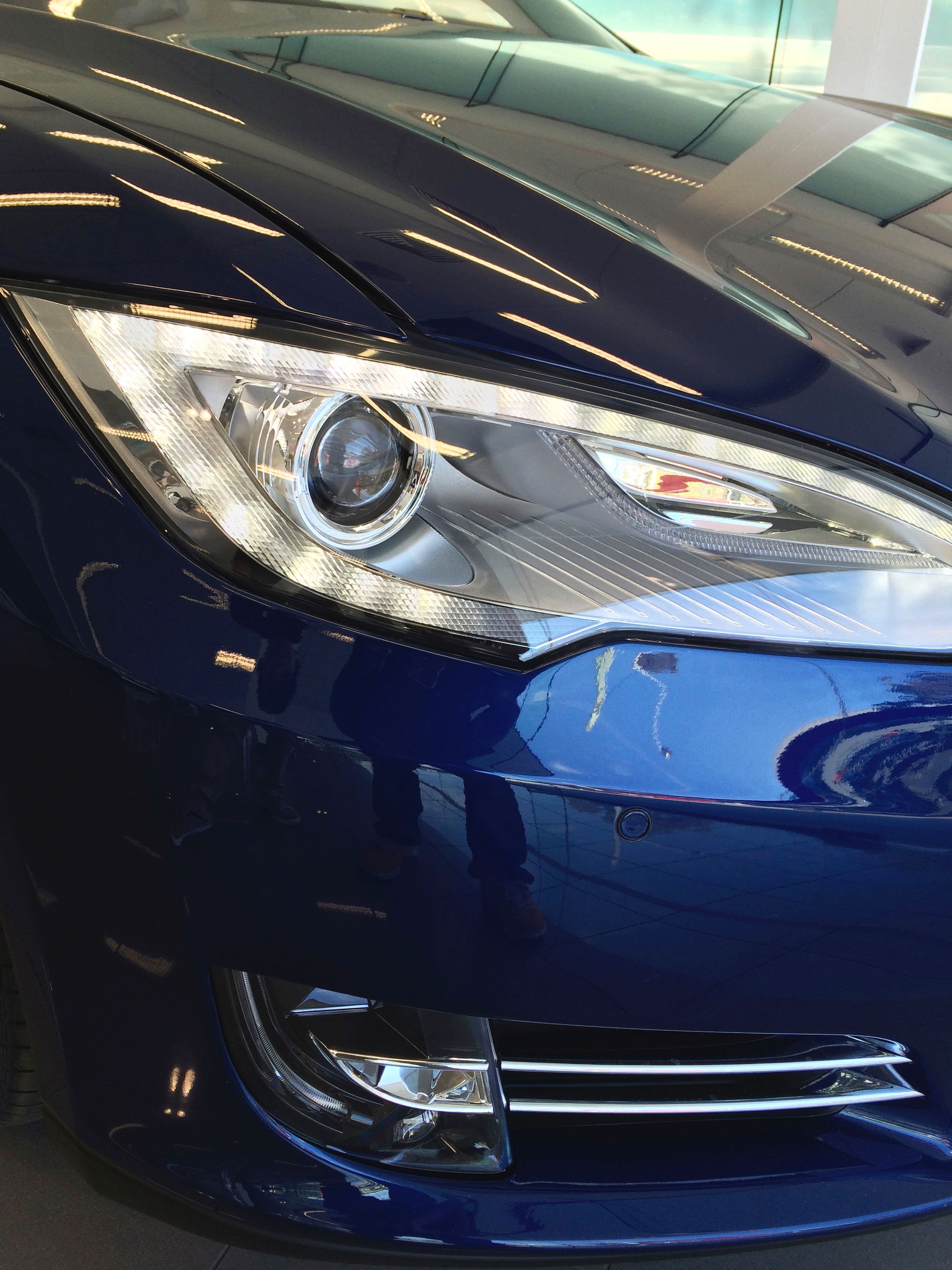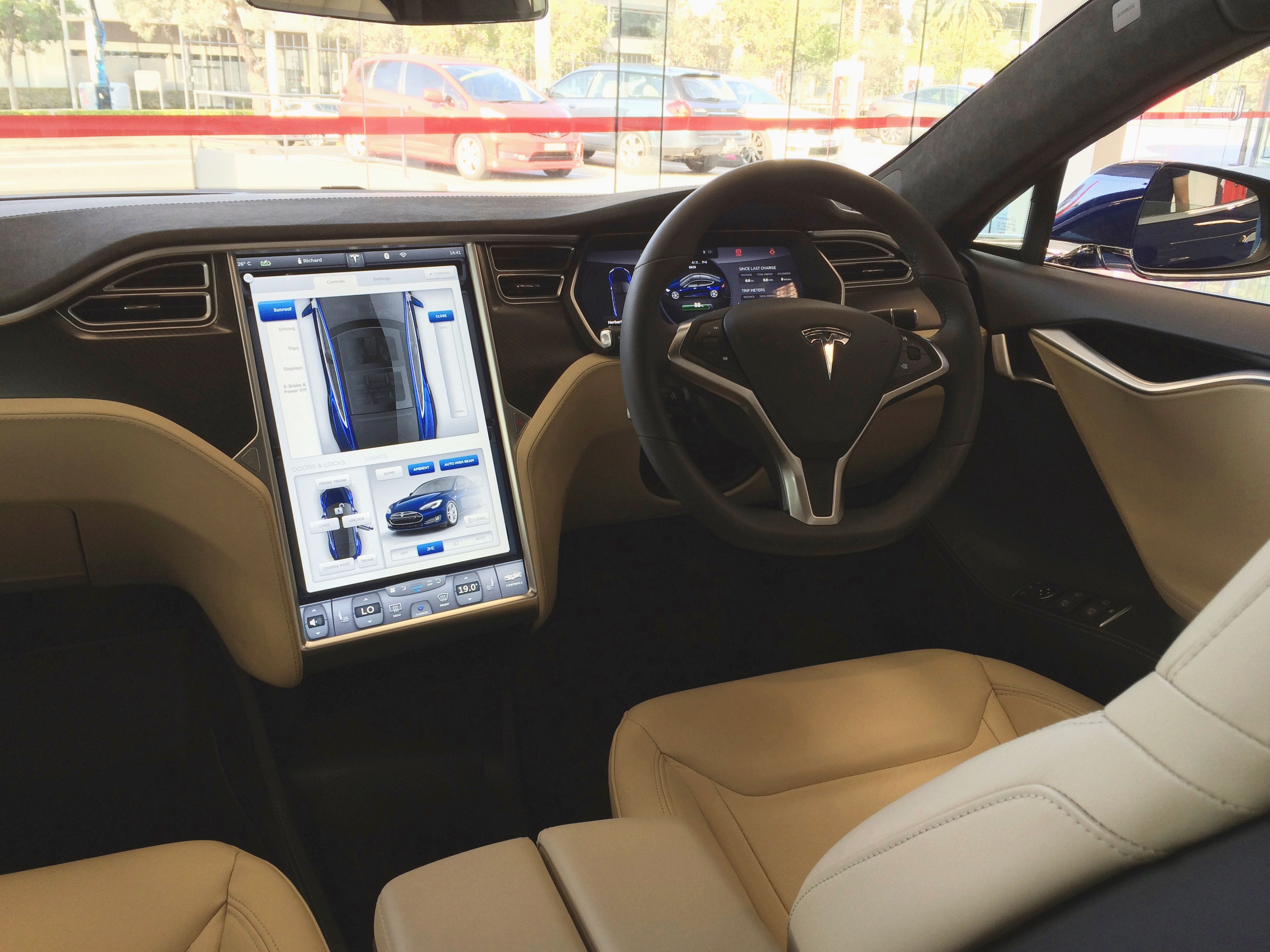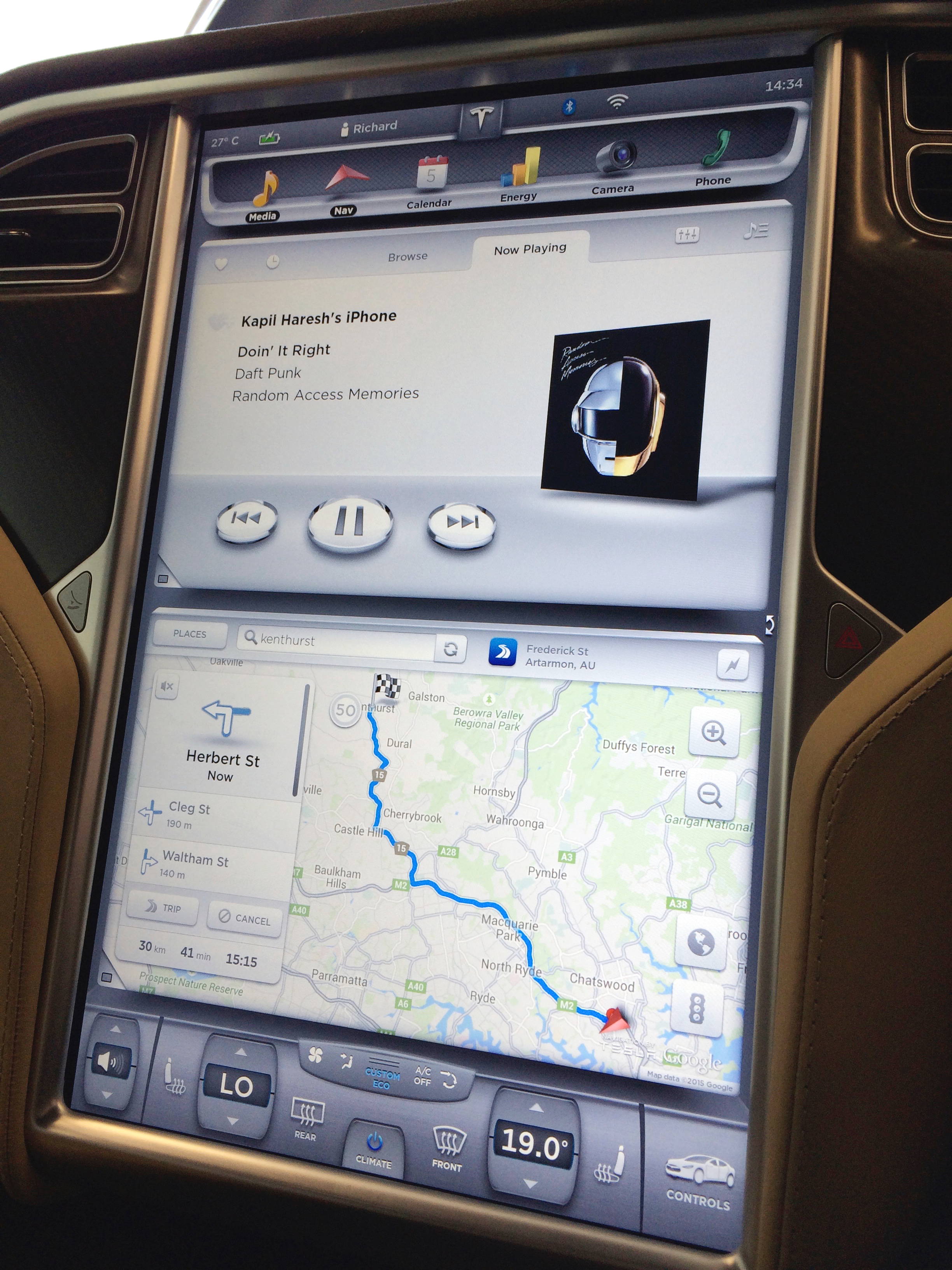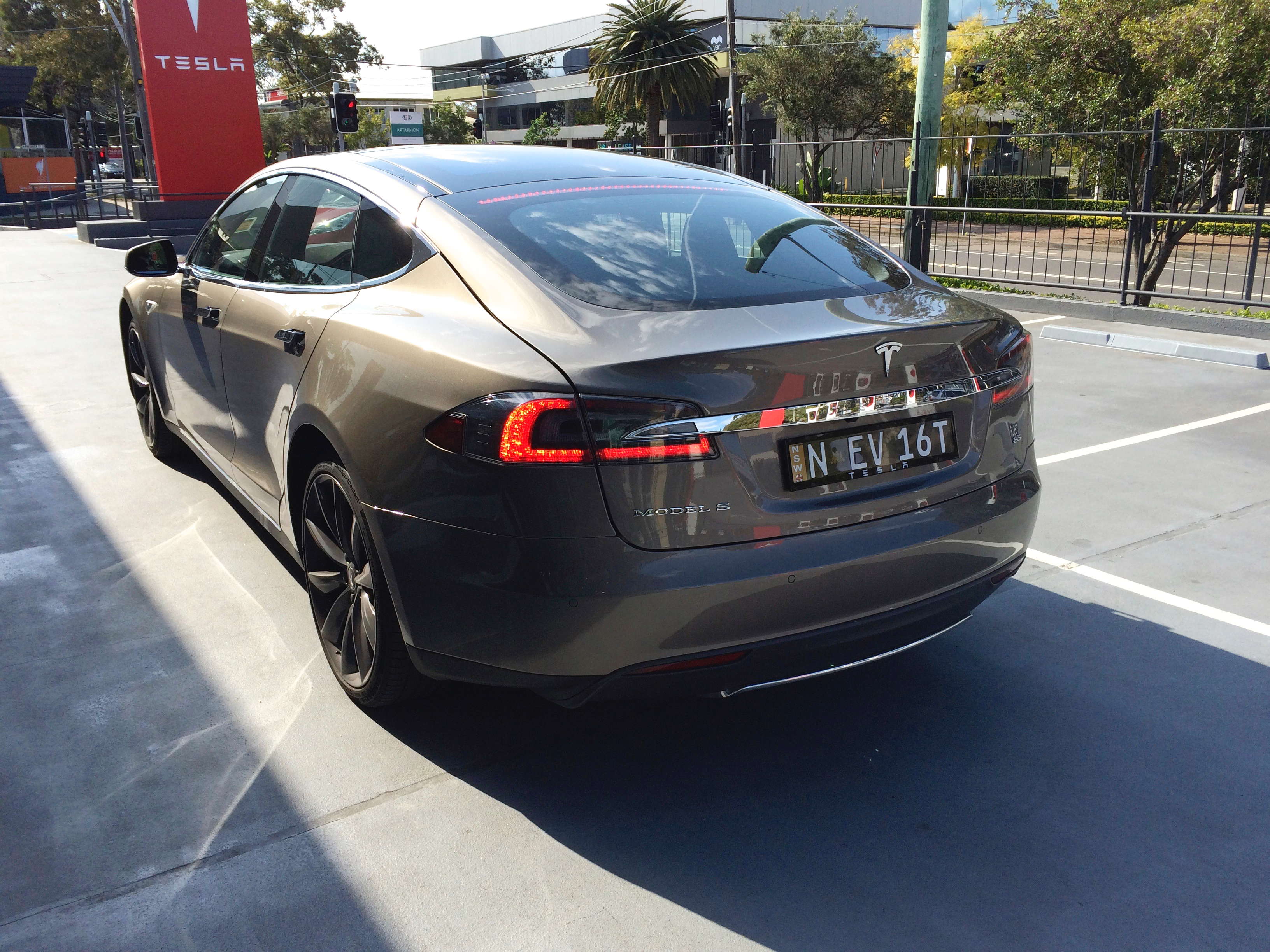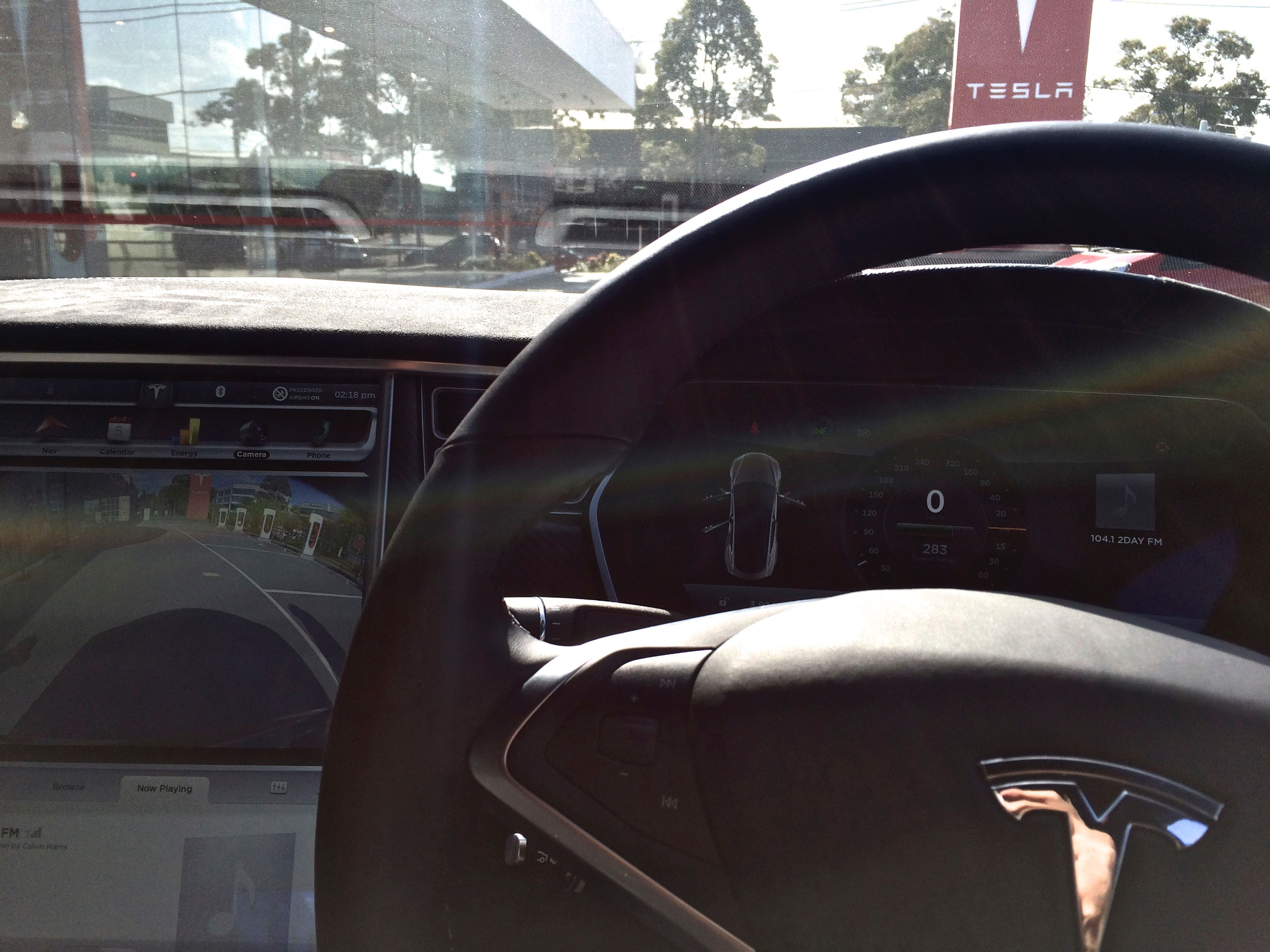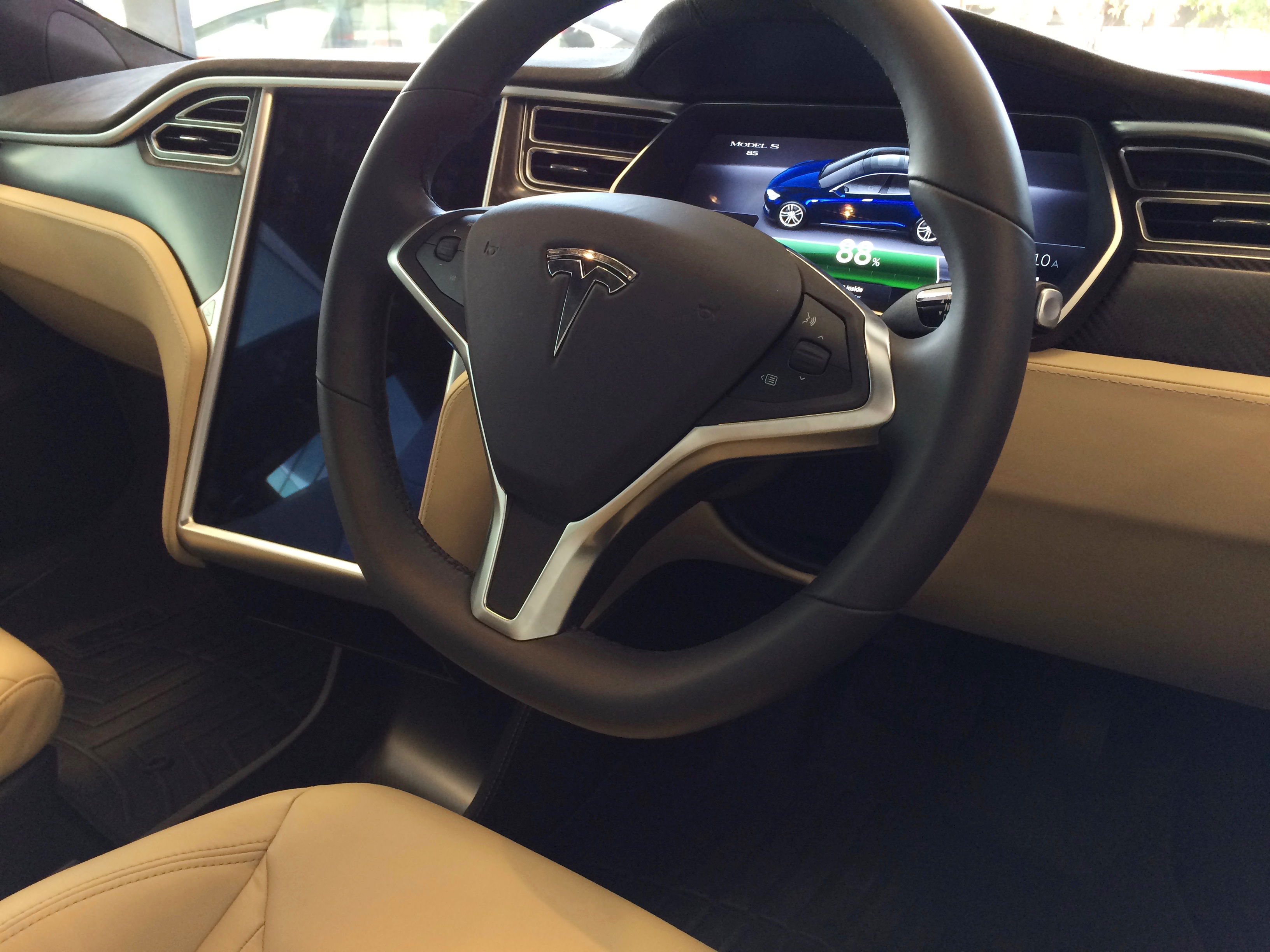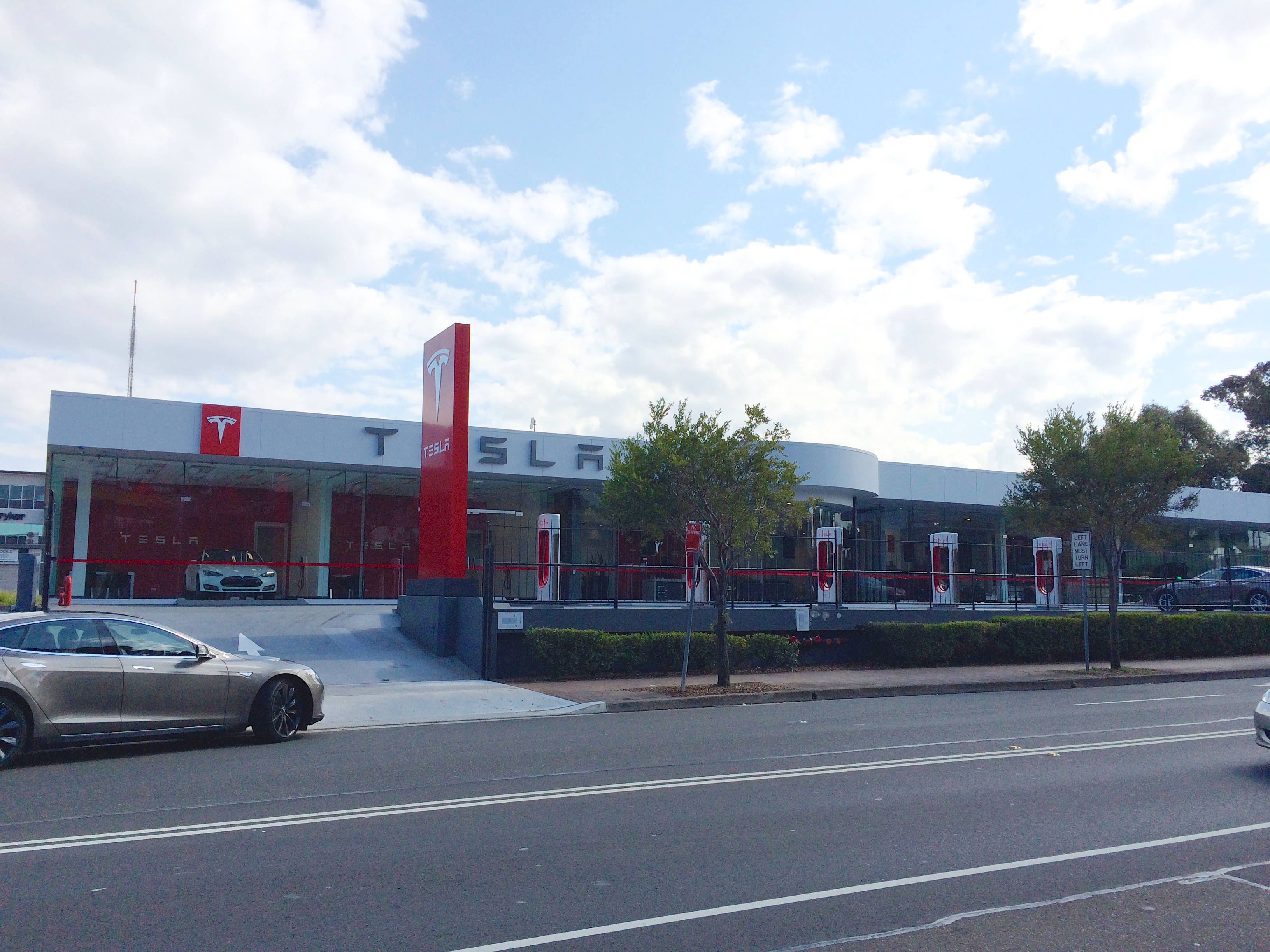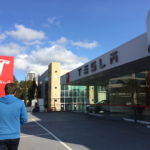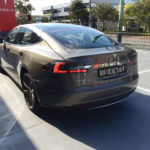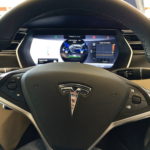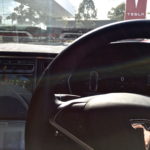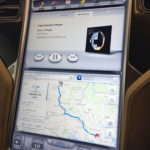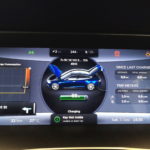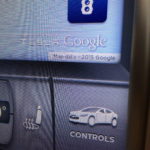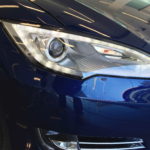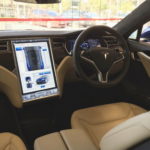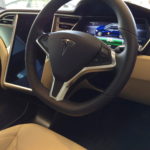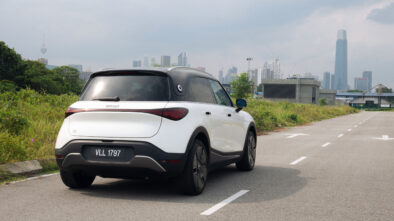Tesla Model S First Drive. The True Supercharged Sedan.
Back in 2009, Tesla unveiled to the world, the Model S prototype sedan. Essentially the world’s first production electric luxury sedan, many of us were a bit skeptical if Tesla would be able to keep up with the impending demands from the luxury car market, while ensuring world class after-sales and quality standards, especially considering that prior to this, the only other car Tesla ever produced under their brand was the Elise-based Roadster, which had just entered into production. Many were also very curious if Tesla would be able to come up with their own platform, and tune a car to ensure it drove like how a luxury car would, considering the Roadster was essentially a re-engineered Lotus
Elise.
Fast forward to 2016, 4 years after the first Model S-es were unveiled to the world in production form and delivered to the first customers, Tesla itself has become a very strong competitor in the luxury car market. Their third model, the Model X cross-over was recently unveiled in production form towards the end of 2015, and Tesla is expected to launch their compact luxury car, of similar size to the BMW 3-Series, Mercedes C-Class and Audi A4 very soon.
But things are different now, gone are the skepticisms (or at least it has been greatly reduced compared to prior the Model S launch) when the Model X launched, and many can’t wait to see Tesla’s compact sedan. For a company that is barely 15 years old, with only 3 models ever produced, it is genuinely an amazing feat, considering people are willing to forgo the more well-established German trio and British or Swedish alternatives for what is essentially the most tech-forward sedans out there. And after driving the Model S, you would definitely find it tough to not get one over its conventional competitors. It’s not perfect, but it sure does come close.
One of the biggest differentiators between the Model S and the conventional rivals is the part where the Model S is all electric. No engine, no fuel, no emissions. Unlike its class competitors like the BMW 5-Series, Mercedes-Benz E-Class, Audi A6, Jaguar XF, Maserati Ghibli and Lexus GS, and to a certain extent, the Porsche Panamera, there is no option to have any form of fuel powered engine in it, and the converse is true as well, the Model S’ competitors don’t have a pure electric option at time of writing, at most, they only have a hybrid or plug in variant instead, which makes the Model S to be the only electric sedan out there.
Our experience with the Model S took place in Australia, where we had booked in an appointment to experience the Model S at the first Tesla showroom in the country, in St Leonards, Sydney. The experience of booking in the appointment was as expected, all online, and painless in fact. Upon arrival, we got to meet with one of the Tesla sales advisors, who was really attentive and explained the whole car and its underlying platform before we embarked on our drive. Even though we did inform that we weren’t going to buy it in Australia (we were leaving the country soon), that didn’t hamper the experience, so a big thumbs up for that.
Platform
The Tesla platform itself is rather interesting. It is essentially a mix of aluminium (mostly) and reinforced boron steel (for safety), and unlike most cars where there is a preparation for a drive-shaft that impedes the amount of space inside (the huge transmission tunnel in the middle of the 5 Series’ rear space for example), the Model S doesn’t have any of this. All it has is a space in the front for the front trunk (frunk), a flat centre floor plan which houses the batteries in one flat layer, and in the case of our rear wheel drive unit, the electric motor in the rear between the rear wheels. This makes it very simple in comparison to regular cars, but very smart as well. As the weight of the batteries are distributed low down across the entire floor, the centre of gravity is much lower than normal cars, making is more stable and confident in the corners.
In units where there is all-wheel-drive, instead of having one large motor and using a differential to transfer power to the front wheels, Tesla decided to go with two motors, one large one for the rear and a smaller on in the front between the front wheels, hence eliminating the need for any differentials to transfer power to the front, so there is no difference between the standard rear wheel drive and the AWD Model S in terms of the centre part of the car’s platform. Having the weight low down also helps in terms of safety, as it reduces the chances of a rollover from happening in the first place, and the lack of an engine up front means there is more of a crumple zone too in frontal impacts. The reinforced boron steel complements the Model S’ platform design, ensuring high levels of structural rigidity – making it one of the safest cars tested.
By far, most manufacturers have tried very hard to make their electric or hybrid models look distinctive and differed from the rest of their line-up. In some cases, it works, like in the case of the BMW i8, but for the most part, it doesn’t go down too well, take the Toyota Prius, Nissan Leaf and the BMW i3. They are undoubtedly distinctive, but they aren’t the best to look at. Which makes Tesla’s design approach of the Model S to be quite different from the rest. For the uninitiated, if you didn’t know this was an electric sedan before you saw it for the first time, you probably would not expect it to have no combustion engine. The Model S does look different from the other brands out there, but not in a way that it looks very distinctive like the Prius or the i8. Simple, clean lines adorn the Model S, and the retractable handles are a cool touch (not the most practical, but more on that later).
Colour options too are pretty standard, you don’t get any wild colours (like Peridot Metallic or Cognac Metallic on some Porsches). In addition to the blacks (you have two blacks, a solid and metallic finish version), whites (two whites, a solid and a pearl finish) and silver paint, you have a gorgeous deep blue, sandstone and deep red options (all three being metallic finish), but that is about it. Unlike the competition, there is no option for a visual sport package, or even custom paint colours, which is a rather odd omission from Tesla’s side. The use of chrome is also very tasteful, and not overpowering, which is a very nice touch from Tesla. Even despite the original Model S prototype being unveiled in 2009, 7 years on, the Model S still looks fresh on the road, which is an impressive feat considering the pace this segment of the market moves.
Interior
Getting into the Model S itself invokes a sense of occasion. As you approach the car with the key fob, the door handles immediately extend out, inviting you into the car. Stepping inside, you realise you are in something that genuinely looks like a 21st century car. With barely any physical buttons on the centre console (you only get physical buttons for the glove box release, and the hazard lights), everything else like climate control, lights, navigation and even the onboard web browser is controlled via the single large touchscreen that dominates the facia of the centre control. One thing very impressive is how Tesla has ensured that it’s very responsive, almost like a giant tablet.
Also, Tesla has ensured the screen is perfectly usable even under direct sunlight, which is something that was easily tested under the bright and sunny Sydney weather. The driver’s controls are rather familiar to those who have used Mercedes-Benz passenger cars in the past, in fact, the gear selector, indicator lights (with integrated wiper controls) and cruise control stalks are all lifted directly from the Mercedes parts bin. To those who have not used Mercedes vehicles in the past, you may find the column mounted gear shifter and indicator stalks with integrated wiper controls a bit confusing initially, but you’ll get used to it.
Fit and finish is pretty decent in general, though you’d need to step up to the next generation seats to truly enjoy them. The leather used on the unit we viewed had already showed signs of dirt, which wasn’t surprising as it had the tan leather seats, the black leather on the unit we got to drive however held up reasonably well in the first 3000km it had gone through in the first year, considering it was parked in the sun for most of the day. However, while in general the fit and finish was reasonable, it was still not up to the standards set by Audi and Porsche, considering the pricing of the car.
For a start, the electrically extending door handles got confused at one point and nearly caught my hand while I was trying to open the door. There’s also the rather hollow sounding door closure sound, we’re sure the car is very solid, but first impressions aren’t as bank-vault solid as some of the products that come out from Stuttgart or Ingolstadt. Rear leg and headroom too is actually a bit disappointing, considering the size of the car. The sloping roof impedes in the rear in terms of headroom, compared to its German rivals’ less tapered roof-line, a 6 foot tall friend who came along noted the headliner was brushing his head when he sat in the rear.
However, the bigger surprise was the raised floor in the rear causes your knees to be set up high, reducing the amount of knee support you get on long journeys.This is mainly due to the design of the battery below the cabin floor. Shorter individuals may not notice it, but for me, this was an issue – despite not being particularly tall (about 167 cm here). The boot is of reasonable size, pretty similar to the rest of the class, and is a bit more usable in my opinion compared to the Porsche Panamera and Maserati Ghibli due to the larger opening.
Performance and Driving Experience
Impressive would be an understatement to describe the performance of the Model S. The model we sampled was the 85kWh rear wheel drive unit – the all wheel drive model launched in Australia just two weeks before the scheduled drive, as a result Tesla Australia wasn’t able to get one of the dual motor AWD models registered in time. But really, after driving the 85, insane may not be sufficient to describe the dual motor AWD models. Starting the Model S is very simple, as long as you have your key fob, just step on the brake and the car will chime to inform you that it is ready. Being electric, there’s no start up time, it’s instant on, and dead silent. You can manually power off the car through the touch screen, but otherwise, to just power it down, all you have to do is get out of the driver’s seat and leave the car in park, it will cut power on its own.
Pulling out of the Tesla St Leonards showroom, the first thing you do realise is the Smart Air Suspension (optional extra), begins to lower the car once you get onto the main roads. Using the GPS and Tesla’s databases, the car will work out based on your destination and driving route if the air suspension needs to be raised in order to ensure the car doesn’t scrape the road (i.e. when driving up a ramp), and if not, it will lower it down to the standard (or if you prefer, the sportier, lower setting) to improve handling and aerodynamics. Another thing particularly odd about the Model S is the sheer silence of the car when pulling away from the lights or even at motorway speeds. But nothing surprises more than the acceleration and handling of the car.
I personally have experienced a Nissan Leaf, and driven a Renault Zoe and I found those cars very responsive. And for context, I have tried out a Maserati Ghibli and VW Golf R Mk7 (review coming soon!), both having 0-100 km/h times between 5 and 5.5 seconds, which is about the same as the Model S 85 (which has a 0-100km/h time of 5.6s) here. But unlike the Ghibli and Golf R, the use of an electric motor means you get instant power as soon as you put your foot down, and it shows. The Model S definitely felt more responsive than the Ghibli (which is of comparable size and power), both on the city, as well as on the motorways.
You don’t realise how quickly you have hit the speed limit, especially considering how the Model S does it without any noise. As quoted by two others who joined me on the drive, all they felt was being thrown back into the back seats and just holding on when we pulled away at full acceleration (as per suggested by the Tesla associate). Cruising along in the Sydney CBD, you do notice this is a bigger car, it doesn’t “wrap around” you as much as the Ghibli, yet, having said that it is agile and nimble enough in the city, also helped by the pretty good visibility all around.
Ride comfort is very good, helped by the air suspension, you barely feel the highway joints despite being on the large (optional) 21” wheels. The biggest surprise in terms of handling is the dynamism (for its size) of the Model S. It has very minimal body roll (helped by the low centre of gravity), and a pretty well judged electric power steering – which is very impressive considering Tesla is still a pretty young brand, in comparison to other brands who have had to spend quite some time to perfect their electric power steering feel.
The sheer amount of confidence and balance the car has through the corners is very impressive, it’s probably as good as the BMW 5 Series and Maserati Ghibli (when both are equipped with the adaptive suspension), without the harsh ride of the Ghibli in the city. Brakes are surprisingly very natural, you don’t really notice the car has regenerative braking when the regenerative mode is set to low, but under the normal mode, it does need some getting used to.
Once you do get used to the regenerative braking in standard, you could very easily drive with just modulating the accelerator and letting it coast and use the regenerative braking to slow down. However the one thing I did notice is that on slopes and hills, the Model S is a bit indecisive in terms of its creep feature. You can disable it, but if you do have it on, on flat ground it works perfectly but on slopes, it tries to move forward, and fails, causing it to roll back a very small amount, before the motor tries to get it to creep forward again. This in turn makes the car feel like it is rocking back and forward (slightly), which is frankly a bit disconcerting at this price point, as its more conventional competitors don’t seem to have this issue.
The good thing is that it’s mostly just a software update that is needed, and being a Tesla, it actually can update itself, just like your smartphone at your convenience without needing a visit to the service garage. Charging with the Supercharger network is pretty convenient too. Pull up to a Supercharger and plug in, for free, and you’d be able to charge from 0-100% in about 70 minutes or so. Considering the 502 km (rated) range, this makes it very easy to actually take the Model S around for longer trips – provided you have access to the Supercharger network or are willing to make a reasonable stop to plug into a standard 240V plug.
Final Thoughts
Assuming you were in the market for a nice, luxurious sedan, that would do the 0-100 km/h sprint in about 5 seconds. A Mercedes-Benz E400 would start at about A$113842 base before on roads and any options, a BMW 535i before any options and on roads would start at about A$116930, while a Jaguar XF 35t Portfolio and a Maserati Ghibli before options and on roads would cost about A$112800 and A$143000 respectively. On a whole, these models generally come similarly equipped as the Model S in base form, however as options pricing aren’t available without going to a dealer, we couldn’t get the exact pricing of a competitor’s car that was specified similarly as our tester here, thought this price comparison does give an idea of the positioning of the Model S.
The closest you could get to an eco-friendly option on sale right now in Australia would be the Porsche Panamera S e-Hybrid, which starts at a whopping A$285300. At this point you realise the Model S isn’t priced too far off from its more conventional competitors, which is a rather pleasant surprise considering Australia’s high pricing on luxury vehicles. This is of course, before you factor in all the fuel savings you’d be getting, and especially if you live near a Supercharger, you essentially don’t pay for “fuel” charging the car as well, making the finance side of things become even better.
So it looks good, drives beautifully, reasonably well priced and sure feels like the future, but would we recommend it? It really depends on your situation and where you are located. If you were going to be using this mostly in a city and don’t plan to do too many long drives, or at least know your regular destinations have a Supercharger or some Tesla supported charging stations, then yes, the Model S makes absolute sense.
However, if you frequently drive to locations where Supercharges and EV charge stations are sparse, or if back seat comfort is absolutely number one priority, then you may have to seriously consider the alternatives, however judging by the first impressions by others on the new Model X, Tesla has definitely learnt from the shortcomings of the Model S and prevented those from repeating in the new Model X – hence, it won’t be surprising if the Tesla Model S Series 2 comes in as the perfect sedan, and probably give the upcoming production version of the Porsche Mission E Concept a good run for the money in the race to the best driver-focused luxury sedan.
Big thanks to Kapil Haresh for this write up. More of his reviews coming soon!
- Will be back

